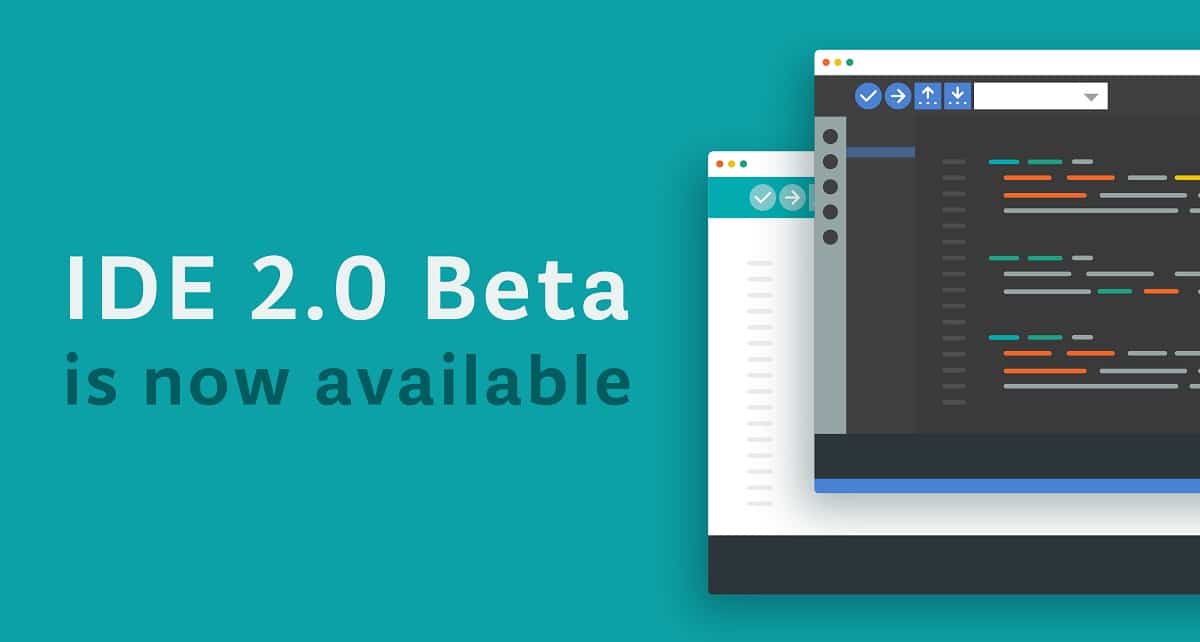
The Arduino team unveiled a few days ago through an ad that version 2.0 (beta) of the Arduino IDE is available for download and that its code repositories are becoming open source.
Among the novelties that are presented, it is mentioned that advanced functions are offered, a better user experience and faster compile time, besides that as it is written, editor suggests (finally) autocompletion of variables and functions depending on the libraries they have included.
About Arduino
For those unfamiliar with Arduino, you should know that this is a software and hardware development company and that it provides an IDE that supports more than 1000 development boards of the Arduino family, official or not.
So far, eThe Arduino IDE offers a simple and clear interface, enough for most users, including those new to the platform.
While more experienced users criticize it for its limited editing capabilities compared to modern editors. Additionally, they still require advanced debugging capabilities, with the ability to step through code, check variable, memory, and register contents at breakpoints.
The IDE in its current versions 1.x is developed in Java, and its monolithic code base makes it difficult to implement such advanced features on a multitude of platforms and operating systems.
Code started refactoring in 2018 with big changes, plus the arduino-cli tool offers all the basic IDE features that advanced users can integrate into the professional IDE of their choice. Arduino-cli was written in Golang.
In 2019, the "Arduino pro IDE" was released in Alpha version. This new IDE built on arduino-cli is based on a modern software stack (Theia and Electron).
What's New in the Arduino 2.0 IDE Beta?
As mentioned at the beginning, the new Arduino 2.0 IDE has a more modern editor Than its predecessor, its interface has become more responsive, but the creators say that translations will also run faster than before. Although at first glance, the new editor looks very similar to the old one, for example, the bar with the buttons to verify and load the code has been preserved.
The board to be programmed can now be configured there directly. The sidebar is new, with debugging, the dashboard and the library manager, which offers three useful functions and also refers to the configuration options.

And it is the same platform as Electron based on web technologies in which Visual Studio Code is built and thanks to which it comes with completely new capabilities. These include, for example, automatic code completion, which in addition to C ++ also helps to write JavaScript, HTML, and CSS files, but also the ability to use several different Serial Monitor tools to communicate with pages in parallel.
Another feature What stands out about this beta version of Arduino IDE 2.0, is that has a live debugger, making it easy to find bugs in code snippets.
Breakpoints can be set in the debugging panelso that errors can be caught in a specific piece of code and variables can be adjusted during debugging. The debugger supports all Arduino boards running on SAMN and Mbed platforms, while for other third party boards, follow a technical manual to configure the debugger.
Finally, the Arduino team mention that the development of Arduino IDE 2.0 has been possible thanks to donations and the purchase of original Arduino boards.
Developers were paid with this to work on open source software.
The beta version can be downloaded for Windows x86-64bit, Linux, or macOS, though Arduino still calls out experimental software and warns you of potential bugs.
If you want to know more about it, you can consult the details in the following link.